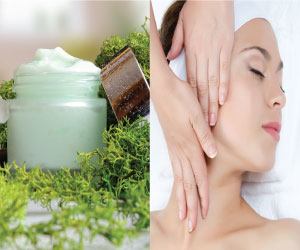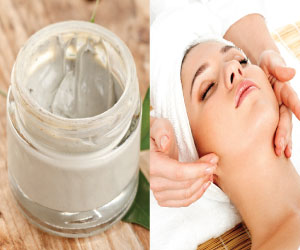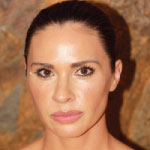Face mapping is the intrinsic analysis of some of the underlying, internal issues that are outwardly reflected on the skin. The skin is so fascinating because it can tell a story with a simple glance. By looking at the color of someone's skin, it can be determined that someone with a yellow hue might have a slight case of jaundice. This example is just one of the correlations that can be made when the skin tone changes. Face mapping, however, is a bit more detailed and consists of looking at the client's skin and analyzing why a particular placement on the skin exists.
 FACIAL SECTIONS
FACIAL SECTIONS
The skin on the face is divided into three sections, all of which have different meanings. The chin, skin around the lips, upper lip, and nose are all connected to hormones. When a breakout occurs in those areas, it is due to a hormonal change – either a peak or decline in their hormones – that is causing the skin to erupt into papules, pustules, and/or cystic acne. When a client starts to have active, reoccurring acne on their cheeks, they are typically experiencing levels of stress that they are unable to control. The third area of the skin, the forehead, has breakouts when the client is staying up late and not getting enough sleep. These breakouts are more common among teenagers and college students, due to numerous hours being awake and not receiving adequate amounts of sleep. When skin care professionals look at the client's skin under the magnifying lamp, they should make an analysis of those three sections, as it will guide them to the next analysis, the placement of the strategic protrusions on the skin.
THE ELEMENTS
Breathing is an intricate part of bodywork and healing and is something that should be observed when a client is on the table. Those with fast, short breaths tend to carry more fire in them, radiating redness, dryness, and heat throughout the skin. With these clients, professionals should avoid using steam because they need to cool down and slow their breathing.
Assessing the client's breathing pattern also allows for a partial determination of their dominating elements. Elements are used in Chinese, Japanese, and East Indian bodywork and healing arts. The Chinese and Japanese believe in the elements of metal, wood, water, fire, and earth, whereas the East Indians believe in the elements of air, ether, fire, water, and earth. These elements exist in all people and there stands, at any given time, an imbalance of the elements. An imbalance of the elements throws off a person's energy, making the energy within them positive, negative, blocked, or static. When this imbalance occurs, it tends to show on the skin in the form of dryness, rashes, eruptions, excess oil, altered shades of color, and more. Metal, air, and ether are similar elements with a small variation – being that they are different elements – in regard to their effect on the body, but all of the elements serve different purposes.
Metal, Air, and Ether
A metal, air, and ether client will have changing breathing patterns; they will breathe short and then long and then short again. These components are the elements of change and flow like a leaf in the wind, never really staying still. Because of their interchanging nature, metal, air, and ether clients tend to have dry skin. When working on a client with this dominating trait, use a mild chemical exfoliant that is citrus based because they find citrus scents calming. Furthermore, the chemical exfoliant will treat the dry skin they are experiencing at that time. These clients can receive any kind of facial massage because they like change. Mix up their massage with pressure points, tapotement, effleurage, and kneading.

Fire
A client that is dominated by the fire element has a fast breath and often has a hard time slowing down. Their breathing is usually faster and they tend to be the clients that enjoy conversation during the facial. The fire within them, which is dominant at the time, will cause their skin to be warm. These clients also usually have sensitive skin. As a result, it is best not to add heat to their already-warm skin through the use of a steamer. Fire-dominated clients calm down with floral scents, so rose is a perfect fragrance to use on them, especially a rose water mist. Sea algae-based products are also great to use on their skin because the marine-like properties come from the water, which, in return, will cool the fire. During the massage of a fire-dominated client, be sure to move slowly, using long, effleurage strokes to calm their breathing and allow the skin to relax.
Water and Earth
Water and earth clients are similar in that they are both calm. They are the clients that, when asked what kind of facial they would like, will respond with, "whatever you think is best." They are easy-going clients and are there either just to relax or just to be touched. Since water- and earth-dominated elements are calm and cooling, these clients can receive a good number of facials. Their skin tends to be oily and they tend to retain more water, so products that are more detoxifying to their skin are best. Clay-based products, with the scents of nature, help their skin to be more receptive. Because these clients tend to retain more water, flushing strokes during the facial massage – lymphatic drainage particularly – are ideal for these elements.
 PROTRUSIONS
PROTRUSIONS
After assessing the breathing pattern of the client and their dominating element, professionals should look at placements of protrusions on their skin. In this case, protrusions are interpreted as papules, pustules, cystic acne, cherry angiomas, macules, moles, and any other disruption that protrudes from underneath the skin. Skin care professionals should always question why a particular form of protrusion is on a certain spot of the skin.
ENERGY CHANNELS
Thousands of years ago, eastern civilizations from China, Japan, and East India developed certain theories about the body. They believed, and still believe and practice to this day, that the body has energy channels that correspond to certain organs in the body. These energy channels are known as meridians, acupressure points, tsubo points, and chakras. The body has an energy force that fuels itself and is moved not only by a daily caloric intake, but also by a spiritual connection within the body and universe. Humans respond to the environment around them; the activities they partake in, the food they indulge in, and the people they interact with on any given day influence the way the body internalizes the environment. This internalization eventually shows up on the skin.
Facial mapping allows the professional to understand the client's behaviors without having to ask. For instance, if a client consumes a significant amount of alcohol, skin care professionals may notice a rosacea-like appearance on the chin and nose, as well as dark circles around the eyes. The stomach, kidneys, and liver are acupressure points around the eyes and a change in skin color around that area is a good indicator that one of those organs is deficient or in an imbalanced state. That is why, when professionals notice a rosacea-like appearance around the chin and nose and dark circles around the eyes, a correlation between the aesthetic appearance and the client's level of alcohol consumption can be made. Yellow and brown coloring around the mouth and chin, in addition to numerous fine lines, is a good indicator that the client is a smoker. These signs are typically accompanied by protrusions existing in the nasolabial folds and refer to the acupressure points of the lungs, indicating that their lungs are deficient in energy. Many clients are unaware of the consequences of their activities, which reflect outwardly on their skin. 
Meridians
Acupressure and Shiatsu points are very similar on the face and only have a couple of variances within their meridians. According to these two therapies, there are 12 meridians and 12 energy pathways. In acupressure, these meridians are the gall bladder, bladder, lung, heart, pericardium, triple burner, stomach, large intestine, small intestine, kidney, liver, and spleen. In Shiatsu, the 12 meridians include the gall bladder, bladder, lung, heart, triple heater, stomach, large intestine, small intestine, kidney, liver, the spleen (pancreas), and the heart governor.
The face has corresponding acupressure points, based on Chinese therapy, and tsubo points, based on Japanese Shiatsu, that pertain to different meridians and different organs within the body. When there is a blockage, or a disruption within the energy flow of that particular, corresponding organ, a protrusion may occur on the face or a slight change of color may occur on that certain point. For example, it is very common for a client to receive a papule on the tip of the nose. In both Chinese and Japanese therapy, that corresponding spot where the papule protruded the skin alludes to the heart. This protrusion indicates that the energy within the heart meridian is experiencing a disruption of flow in that particular area.
Meridians carry yin and yang, which either increase or slow down energy. They carry this energy through the governing vessel and conception vessel, which start at the root of the trunk and meet at the top of the cranial crown. These two vessels should not be used during facial mapping because they do not correspond to organs within the body. These vessels feed the overall well-being of the body, mind, and spirit connection. When all three connections are in tune, yin and yang flow through them with fluidity. When they are not in sync, the vessels start to change their energy by either increasing or slowing their flow. This change of flow disrupts harmony within the body, causing the organs to start to respond with negativity. That negativity, in turn, shows on the skin. The same idea applies to the East Indian therapy of ayruveda, which has marma points. These marma points serve the same purpose as acupressure and tsubo points, being that they are derived from the 12 meridians of the body, the same exact meridians as the Chinese acupressure points. In all three therapies, if there is a deficiency of energy, it will appear on the skin.
Skin care professionals should attempt to incorporate face mapping into every skin care analysis as it will allow them to know how to treat the skin, what products to treat the skin with, and what form of massage to perform on the skin during the facial. Face mapping is one of the oldest techniques used in understanding the skin and the body it protects. Knowing which protrusions are related to certain organs and energy pathways allows for the best treatment possible for the client because the professional is able to be in tune with their overall well-being.
 Amra Lear is a licensed massage therapist and aesthetician. She has been working in the spa industry for 16 years, working for two of the most prestigious spas in the world. Her clientele consists of the stars, moguls, and people alike. She has been trained by Japanese shiatsu masters and the founders who pioneered such wonderful modalities such as ashiatsu, mother massage, and lulur. Skin is her ultimate passionate. She has dedicated the last six years to research and education of biochemistry to better understand the biochemical response to products used on the skin.
Amra Lear is a licensed massage therapist and aesthetician. She has been working in the spa industry for 16 years, working for two of the most prestigious spas in the world. Her clientele consists of the stars, moguls, and people alike. She has been trained by Japanese shiatsu masters and the founders who pioneered such wonderful modalities such as ashiatsu, mother massage, and lulur. Skin is her ultimate passionate. She has dedicated the last six years to research and education of biochemistry to better understand the biochemical response to products used on the skin.
Want to read more?
Subscribe to one of our monthly plans to continue reading this article.